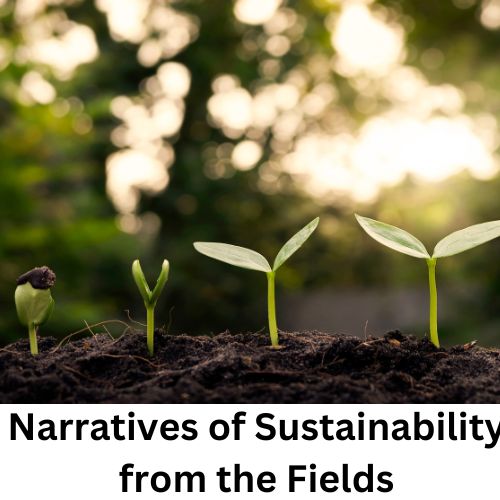Introduction
Agroforestry, the practice of integrating trees and shrubs with crops and livestock, has gained recognition as a sustainable land-use system. It combines elements of forestry and agriculture, seeking to harness the benefits of both while mitigating their respective drawbacks. In this narrative, we explored agroforestry, its origins, principles, ecological significance, and real-world applications. Through the lens of various agroforestry practitioners, we aim to shed light on the multifaceted aspects of this practice and its undeniable potential in addressing global sustainability challenges.
Chapter 1: Roots of Agroforestry
The roots of agroforestry run deep, tracing back to ancient civilizations when humans first began to understand the value of trees and forests. Early agriculturalists recognized that trees could provide various benefits, from shade and shelter for livestock to providing fruits and nuts. Indigenous communities, in particular, have long embraced agroforestry to manage their natural resources sustainably.
1.1 Historical Perspectives
Mesopotamian Gardens: The Hanging Gardens of Babylon, one of the Seven Wonders of the Ancient World, showcased the early human fascination with combining agriculture and horticulture in a structured manner.
Traditional African agroforestry: In various African regions, indigenous communities have practiced agroforestry for centuries, using alley cropping, silvopasture, and tangy systems to maximize land productivity.
1.2 Modern Evolution
Emergence as a science: The term “agroforestry” was coined in the 1930s, marking the beginning of formal research into the field.
Key developments: The work of pioneers like Robert Hart, J. Russell Smith, and Fikret Berkes helped shape modern agroforestry principles.
Chapter 2: The Principles of Agroforestry
Agroforestry is based on a set of guiding principles that underpin its approach to sustainable land use. These principles emphasize the integration of trees and crops or livestock in ways that enhance ecosystem services and productivity.
2.1 Biodiversity Conservation
Tree diversity: A fundamental principle of agroforestry is cultivating diverse tree species, promoting a thriving ecosystem with varied niches and reduced vulnerability to pests and diseases.
Wildlife habitat: Agroforestry systems provide habitat for a wide range of wildlife, contributing to biodiversity conservation.
2.2 Erosion Control
Tree canopies and root systems are vital in stabilizing soil and preventing erosion, making agroforestry an effective tool for combating soil degradation.
2.3 Nutrient Cycling
Agroforestry systems facilitate nutrient cycling by incorporating nitrogen-fixing trees and other nutrient-accumulator species, reducing the need for external fertilizers.
2.4 Climate Change Mitigation
Carbon sequestration: Trees in agroforestry systems capture and store carbon dioxide, mitigating the impacts of climate change.
Microclimate regulation: Trees provide shade and windbreaks, creating microclimates that benefit crops and livestock.
Chapter 3: Agroforestry in Practice
To understand the real-world applications of agroforestry, we explore case studies from different regions where practitioners have successfully implemented agroforestry systems to achieve sustainable agricultural outcomes.
3.1 Taungya System in Southeast Asia
Originating in Myanmar, the tangy system involves temporarily planting tree seedlings among crops, allowing trees and crops to grow simultaneously.
Case study: The success of the tangy system in reforestation efforts in the Philippines.
3.2 Silvopasture in North America
Silvopasture combines trees, livestock, and forage in a mutually beneficial system, offering shade and improved forage quality for animals.
Case study: A rancher in the United States adopting silvopasture practices to enhance cattle production while conserving natural habitats.
3.3 Alley Cropping in Africa
Alley cropping involves:
- Planting rows of trees between annual crop rows.
- Improving soil fertility.
- Providing supplementary income from tree products.
Case study: A smallholder farmer in Ghana using alley cropping to boost food security and income.
3.4 Homegardens in Southeast Asia
Home gardens are diverse, small-scale agroforestry systems around homes, providing families with various fruits, vegetables, herbs, medicinal plants, and timber.
Case study: A family in Indonesia practicing home gardening to meet their nutritional needs and generate additional income.
Chapter 4: Challenges and Opportunities
While agroforestry holds immense potential for sustainable land use, it also faces various challenges and opportunities that must be addressed for its wider adoption.
4.1 Land Tenure and Rights
In many regions, unclear land tenure and rights hinder the adoption of agroforestry, as farmers are reluctant to invest in trees that may be lost if land disputes arise.
4.2 Knowledge and Extension Services
Limited access to agroforestry knowledge and extension services in rural areas can impede adoption.
4.3 Policy Support
Governments and international organizations can significantly promote agroforestry by offering incentives, subsidies, and supportive policies.
4.4 Market Access
Agroforestry products often face challenges in accessing markets, which can be addressed through value addition and market linkages.
Chapter 5: The Future of Agroforestry
As the world grapples with climate change, food security, and environmental degradation, agroforestry emerges as a promising solution for a sustainable future.
5.1 Climate-Resilient Agriculture
Agroforestry systems are more resilient to climate change, as diverse plant species and tree cover provide stability against extreme weather events.
5.2 Global Food Security
With its potential to increase agricultural productivity and diversify food sources, agroforestry can contribute to global food security.
5.3 Carbon Offsetting
Agroforestry can be critical in carbon offsetting initiatives, helping countries meet climate goals.
5.4 Sustainable Livelihoods
Agroforestry has the power to enhance rural livelihoods, providing income diversification and job opportunities.
Conclusion
Agroforestry Chronicles: Narratives of Sustainability from the Fields has taken us on a journey through agroforestry’s rich history, principles, and practical applications. From its roots in ancient civilizations to its modern-day relevance in addressing global challenges, agroforestry stands as a beacon of hope for sustainable land use. By integrating trees, crops, and livestock, agroforestry offers a pathway toward biodiversity conservation, erosion control, nutrient cycling, and climate change mitigation. Real-world case studies have demonstrated the success of agroforestry in various regions, showcasing its adaptability and positive impacts on local communities.
Despite agroforestry’s challenges, including land tenure issues, knowledge gaps, and market access barriers, its future looks promising. With the right policies, support, and investments, agroforestry can build climate-resilient agriculture, ensure global food security, offset carbon emissions, and provide sustainable livelihoods for millions worldwide. The narratives of sustainability from the fields paint a picture of a world where humans work in
